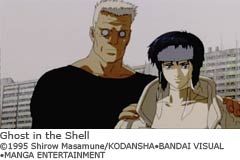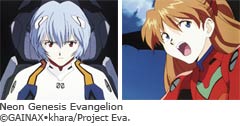It is impossible to discuss Japanese anime without mentioning Hayao Miyazaki, Katsuhiro Otomo and Mamoru Oshii. These three were head and shoulders above their contemporaries in the 1980s and have been pioneers at the forefront of the animation world ever since. Miyazaki, while adopting the theme of living in harmony with nature, as exemplified by such films as My Neighbour Totoro (1988) and Princess Mononoke (1997), ultimately appeals to all generations through his use of expressive techniques which are replete with all the thrills of an action movie. Otomo°«s AKIRA (1987), well-known for its intricate storylines, not only instigated a revolution in the contemporary domestic animation world for his complex plots and dynamism but also achieved massive popularity overseas. And Oshii, whose Ghost in the Shell (the cinema version was released in 1995) had an influence on the Wachowski brothers°« film The Matrix, is a one-of-a-kind animator who brings out the pathology and conflict of a human society set in the near future. |
 |
|
Japanese anime are produced in large quantities, just as manga are, and for this reason there is plenty of scope for varied content and the freedom to decide what goes in them. This means that many anime strongly reflect the personality of the director. The depth of character of the participants, which is on a par with films and TV dramas featuring real actors and actresses, the dramatic quality of the stories and the artistic heights of the screenplay had already begun to sprout shoots in the 1960s, when modern anime techniques were evolving. These traits have continued unbroken to the present. As demonstrated by anime such as Hokuto no Ken (Fist of the North Star, TV series 1984-1988), the source for many trendy quotable lines, Sailor Moon (TV series 1992-1997), the anime about a beautiful girl which started the kosupure (costume play) dress-up boom, and Neon
Genesis Evangelion (the first cinema version was released in 1997), which had a cult following
among young people because of its complicated storylines and technical jargon, anime frequently
give rise to social phenomena which resonate in harmony with contemporary Japanese society. |
 |
|
Text by Mayumi Ekuni-Valler (Editor) |
||
Copyright 2007 - Ministry of Foreign Affairs, Japan |
||










